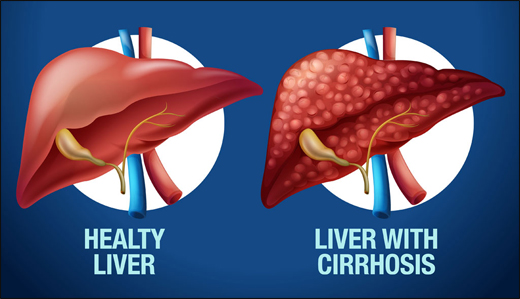Factors Responsible For Liver Failure How Does Ayurveda Deals With It
Abstract
Problems like liver failure has immerse to a great height nowadays. The main reason if it is modernization. People at a very young age of their life start drinking alcohol it could be due to peer pressure or due to any other reason. But this is not the only one factor contributing to liver failure there are so many. Such as in developing countries infections like hepatitis, viruses are the main reason of chronic liver disease & hepatobillary (liver + gall bladder) carcinoma that ultimately leads to hepatic failure.
Ayurveda is the ancient most science that focuses on examining the disease first then going toward the management part. This is beautifully explained in the below mentioned verse.
It states that a physician should try to diagnose the disease first then proceed towards the application of medicine. He should always need to have a detailed knowledge of the ailment.
In this article let put some rays on the factors responsible for liver failure & how ayurveda deals with it does.

Introduction
Firstly let’s discuss about the liver: Liver- It is an organ situated at the right hypochondrium quadrant of abdomen. It plays major role in maintaining metabolism of the body & in detoxifying the blood. It weighs about 1-1.8 kg in humans.
According to ayurveda we call it “Yakrit” (liver) the main place of ‘Agni’ (digestive fire). It releases various useful enzymes and hormones in the circulation.
How does it originate in humans?
This verse explains that – yakrit (liver) & paliha (pancreas) develops from the blood during the embryonic stage of life.
This yakrit (liver) & paliha (pancreas) are the main seat of Raktavah Srotas (blood containing channels) in the body.
Functions Of Liver
- It produce albumin (a protein found in blood serum)
- Helps in synthesis of angiotensinogen (hormone) important for raising the blood pressure.
- Gall bladder a small pouch that’s present below the liver, produces Bile (contain cholesterol & bile acids) that helps in breakdown of fat.
Definition Of Liver Failure
It means inability of the liver to perform its functions properly there is formation of necrosis (death) in hepatocytes (liver cells).
This is of two types
- Acute liver failure: There is rapid development of hepatic failure in this due to any underlying pathology or hepatotoxic drugs (e.g. NSAIDS non steroidal anti inflammatory drugs, anti depressants)
- Chronic liver failure: When a person suffering from liver disease from a longer duration of time such as due to cirrhosis, cholestatic jaundice.
- In regards to our classical text: In rakatavah srotas dushti, vitiation of pitta dosha is usually seen that leads to rakat (blood) toxification.
Causes
As per ayurveda the main reason of raktavah srotas dushti are as follows:
- Consume vidhai anna (acidity causing food)
- Over intake of snigdh (soft), ushan (hot), drav (liquid) diet.
- Excessive exposure to sunlight and fire.
Other causes
- Halimak vyadhi (chronic obstructive jaundice) – in this there is formation of greenish yellow discoloration in the skin.
- Kumbh kamla (chronic jaundice with edema) – presence of edema along with the dark yellow coloured urine & stool.
- Panaki (chronic jaundice complicated with diarrhea).
In modern science
- Acute viral hepatitis is the most common cause worldwide.
- Drug toxicity example paracetamol toxicity.
- Mushroom (Amanita phalloides) poisoning during pregnancy.
- Excessive consumption of alcohol.
- Iron and copper overload.
- Due to underlying autoimmune diseases.
- Certain carcinoma.
- Over intake of fat rich diet leads to fatty liver disease.
- Cholecystitis (inflammation of gall bladder).
- Cholelithiasis (gall stones).
- Non alcoholic fatty liver disease.
- Herditary
- Obstructive jaundice.
Clinical Features: It means the complaints, patient present in front of physician. They are as follows:-
- General body weakness.
- Nausea & vomiting.
- Clubbing of fingers (abnormal shape of nail bed)
- Bruising (bluish discoloration of skin) over the body.
- Jaundice (presence of yellow coloration of skin & sclera of eye).
- Dilated abdominal veins.
- Edema (fluid accumulation)
- Profuse sweating.
- Low blood pressure.
- Ascites (fluid in the abdominal cavity).
- Fatigue.
- Bodyache
- Anorexia (loss of hunger)
- Drowsiness (lethargic)
- Indigestion
- Polydipsia (excessive thirst)
DIAGNOSIS
It means how we can identify the disease. There are various methods:
- Physical examination of the patient: by analyzing the physical signs seen in patient body.
- History taking: A proper history taking play a role of asset in diagnosing the disease.
- Laboratory findings: it includes:
- Complete blood count.
- Liver function test – It includes serum bilirubin, SGOT, SGPT etc.
- Toxicology screening of urine.
- Prothrombin time becomes prolonged as liver plays a major role in the synthesis of coagulation factors that got hampered in this.
- Percutaneous Liver biopsy
- Past history: Generally there is presence of family history.
According to ayurveda we diagnose the disease
Trividh pariksha (Set of 3 examination)
- Darshan (diagnosis is made by visual examination of the symptoms)
- Sparshan (physician use tactile examination to evaluate whether skin is cold/hot)
- Prashan (physician ask direct question form the patient)
Asthavidh pariksha (Set of 8 examination procedure)
- Nadi pariksha – by palpating the pulse rate of the patient.
- Mutra pariksha – by examining the urine of the patient.
- Mal pariksha – by stool examination.
- Jivha pariksha – by examining the tongue whether coated or not.
- Shabad pariksha – by observing the natural sounds within the body like intestinal sound (peristalsis)
- Sparsh pariksha – by observing the patient skin texture whether it is cool, wet or dry.in psoriasis it is usually dry, rough in texture.
- Drik pariksha – when physician inspect patient symptoms through his/her eyes. In liver disease patient yellowish discoloration of skin (jaundice) is the prime finding.
- Akriti pariksha – observing the patient body posture whether lean or obese.
Management
- Condition like liver failure is usually a non recoverable ailment. If we diagnose it in its early phase then the recovery rate is good. But once it reaches the chronic phase then only management is the final solution we cannot completely cure this.
- In modern science they recommend you to go for a liver transplant procedure, every individual cannot afford this as it an expensive procedure & you need to find the right donor for this.
But with ayurveda we can manage its growth with certain herbal drugs such as Bhumiamlaki, kalmegh, daru haridra. Etc.
Line of treatment according to ayurveda: as it is pita elevated “tridoshaj vyadhi”
A. Sanshodhan Chikitsa (Detoxification procedure) –
- Virechan (Purgation) is the best technique to release out the pita dosha from the body by anal route.
- Raktamokshan (Bloodletting) It is considered as “ardh chikitsa” (As a whole treatment) by acharya shushruta because it helps in purifying the blood by removing harmful toxins from it.
B. SAMSHMAN CHIKITSA (By medication) – in this we control the disease by subsiding dosha with in the body itself
- Drink gomutra(Cowurine) – 15 to 20 ml early in the morning
- Triphala sawaras early in the morning.
- Cowmilk with cowurine (15 to 20 ml) drink it empty stomach after waking up.
Planet Ayurveda offers various formulations that aid in managing the further advancement of this:
Liver Care Pack
Product Description
1. Liver Detox Formula
- Ingredients: Katuki (Picrorrhiza kurrao), Kalmegh (Andrographis paniculata), Kasni (Cichorium intybus) etc.
- Above mentioned herbs are natural supplement works as hepatoprotective agents (Good for liver), help in lowering the blood pressure, so prove as best medication in liver disease.
- Dosage: 2 capsules twice daily after meals.
2. Indian Echinacea
- Ingredients: kalmegha/bhunimab (Andrographis paniculata)
- It is mentioned as the best herb to enhance the liver function in the body. It has properties like pita sarak (releases pita dosha from the body), krimighan (kill worms)
- Help in maintaining the immune system and supporting overall health it will provide strength to the patient body in hepatic failure.
- Dosage: 2 capsules twice daily after meals.
3. Yakritplihantak Churna
- Ingredients: Is a herbal powder formulation containing herbs like Phyllanthus niruri, Eclipta Alba, Picorrhiza kurro, Andrographis panniculata etc.
- All these herbs works as natural analgesics (pain killer), appetizer (enhance hunger) & hypotensive (lower blood pressure) thus help in managing further growth of hepatic failure.
- Dosage: You can boil the powder 1 teaspoonful in 400 ml water, keep it boiling until it remains 50 ml. Strain it and drink the water. Leave the residue. Do it twice daily. Make fresh every time.
4. Phyllanthus Niruri
- Ingredient: Bhumi amla (Phyllanthus niruri)
- It posses sheeta virya (cold potency) best suited for lowering the vitiated pitta dosha, also is a hepatoprotective & hypotensive herb, thus help in maintenance of Liver function so effective in liver failure.
- DOSAGE: 2 capsules twice daily after meals.
In our ancient text it is also mentioned that:
- If a physician have a good knowledge of curable and non curable disease after that when he precede the treatment in time, he will surely succeeds. But if he try to treat incurable disease even after knowing that it is a non treatable ailment, he will certainly suffers from the loss of arth (wealth), vidya (his/her study), yash (reputation) in the society.
- The main conclusion of above verse is- it is very important for a doctor to tell his patient that your disease is a non curable one, we cannot treat it completely but we can stop its advancement with herbal medication.
Conclusion
Now we can conclude that liver failure is a condition where disease progress to the advanced stage the only treatment modality for it is liver transplant as per modern science but with ayurveda we can manage its progression by using proper herbal medicine, dietary changes & lifestyle changes.
Planet ayurveda the leading herbal manufacturing unit offers you best herbs and diet charts made under the supervision of ayurveda experts. Products are 100% organic & preservative free. So there is no need to worry when we have planet ayurveda with us. You can contact us through our website www.planetayurveda.com





